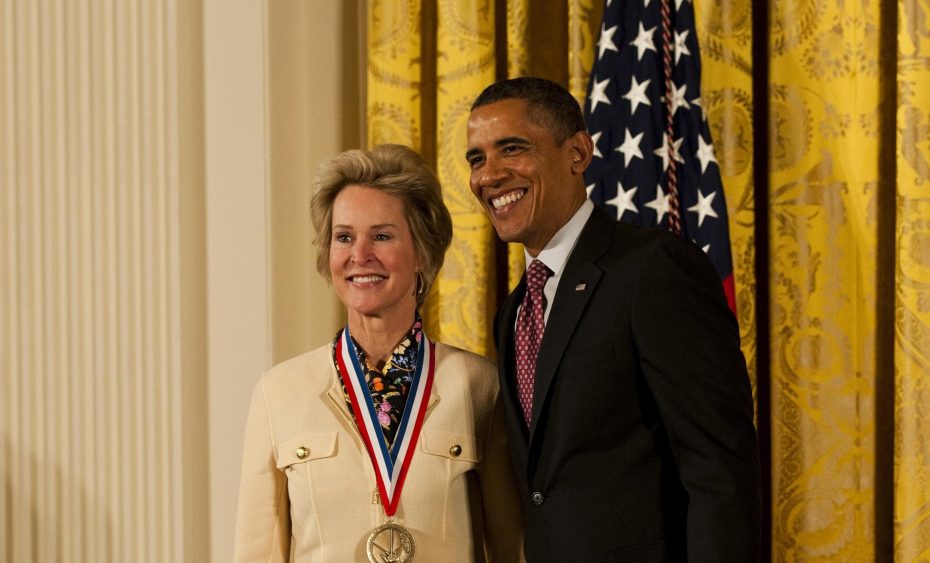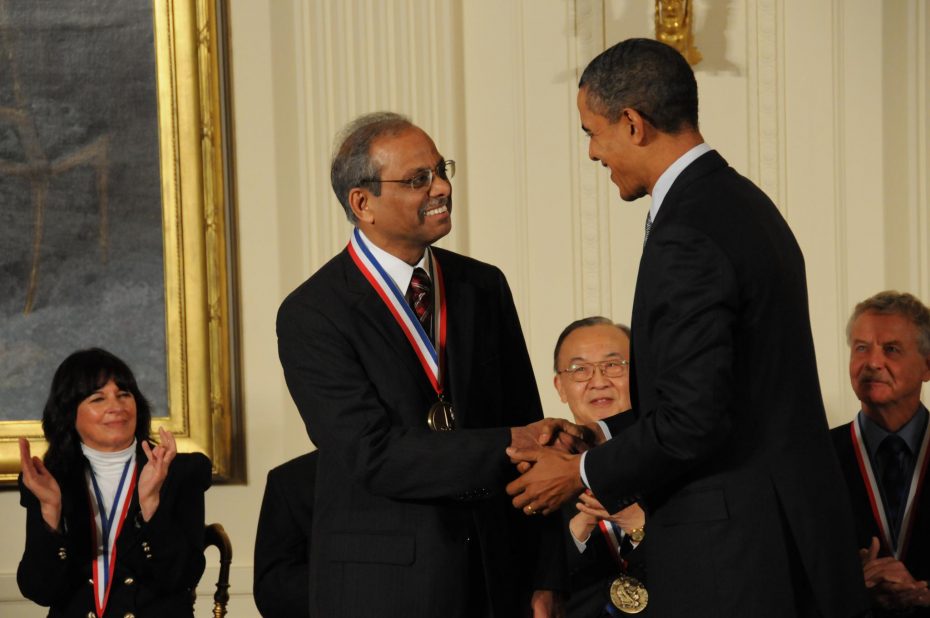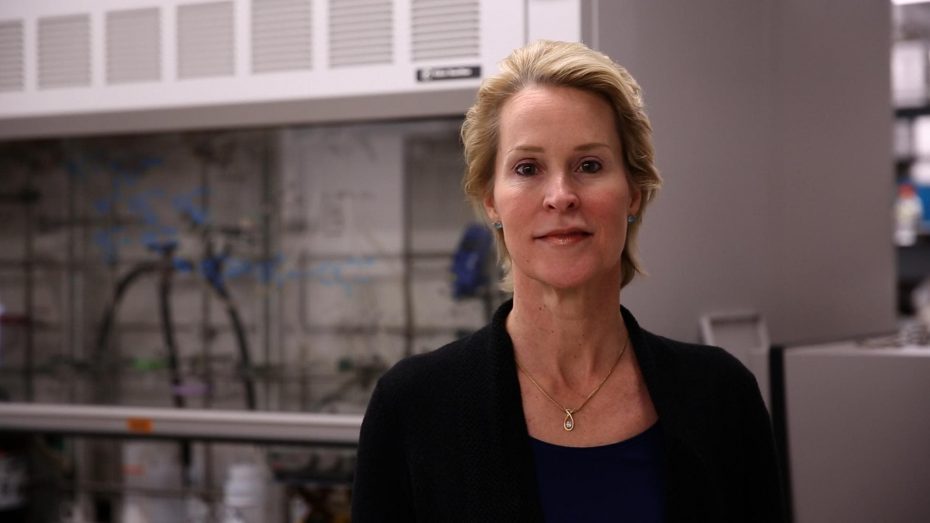Batteries the size of a refrigerator — or bigger — could be the critical next step for transitioning away from fossil fuels to clean, renewable energy.
“Today, we burn either coal or gas to make electricity. We burn gasoline to drive cars. The whole electricity segment, as well as the transportation segment, are largely dependent on fossil fuel,” said Dr. Esther Sans Takeuchi, an expert in energy storage who earned the 2008 National Medal of Technology and Innovation.
Renewable energy sources, like wind turbines and solar panels, could reduce the country’s carbon footprint. But to truly compete as a replacement for fossil fuels, renewable energy must be able to be stored until use. That requires big batteries, bigger than anything available today.
Currently, the power grid is not built to accommodate inconsistent renewable energy sources, Takeuchi said, noting wind and solar can only add about 10% of power “before the grid doesn’t work very well.”
Takeuchi’s research group — also led by her husband, Dr. Kenneth Takeuchi, and Dr. Amy Marschilok — is working on making batteries big enough to power this green transition.
“These renewable resources are high, they’re low, they’re on, they’re off. It makes it very difficult for the grid to respond to that level of fluctuation,” she said. “So, the vision is that if we can successfully store energy that is generated in a renewable way, then you can use the energy when you need it — not just when it’s available, when you need it.”
“The problem is with an intermittent source, the need doesn’t line up with when it is being generated,” she said. “That’s why storage becomes so critical.”
“When we’re talking about backing up the grid, then potentially we’re talking about batteries the size of refrigerators — or many, many refrigerators. So, there are real differences in scalability and size based on the application,” she said. “The question is: How do you make it big and still make it work efficiently, safely, cost-effectively? That’s what we’re thinking about.”

Takeuchi’s research team is tackling the fundamental science of making batteries bigger than they have ever been made before. She is renowned for her work on batteries — albeit, much smaller ones.
Takeuchi received the National Medal of Technology and Innovation for the lifesaving development of the silver vanadium oxide battery, which powers most implantable cardiac defibrillators for up to five years. The device delivers electrical shocks to the patient’s heart to prevent fast or irregular heartbeats.
Takeuchi has since improved the battery with material that could extend the battery life for even longer, potentially resulting in fewer surgeries to replace devices.
Innovative ideas — like introducing new materials — are critical to tackling the two major challenges in making big batteries: efficiency and heat.
“Currently, everything is really thin inside a battery, electrodes are thin, the separators are thin,” she said. “That means the distance that ions have to move inside the battery is really small because the battery is small.”
“But when you make a battery big, in order to make the battery efficient at all, you have to make thick electrodes,” she said. “One of the challenges, getting ions to move through a really thick electrode is it’s just a long distance the ion has to travel and it takes them longer to get there.”
That means a large battery must be charged very slowly.
“So, instead of being able to, for example, charge a car battery really fast … you [would] have to charge it over hours,” she said. “A tiny battery you can actually charge much faster.”
As batteries get bigger, they also get much hotter. The risk of a very large battery overheating is potentially dangerous.
“We’ve all experienced that when we’re charging our phone or laptop, everything gets hot,” she said. “When batteries are small enough, just their normal exposure to the air cools them enough, but when batteries are really big, then cooling the battery becomes a significant issue.”
Takeuchi’s research team is trying to understand the fundamental sources of heat produced in a battery and whether changing the materials can minimize it. Innovating the materials commonly used in smaller batteries could also make them cheaper to produce and less environmentally detrimental.
“Some of the materials in…batteries are pretty expensive and only available in very localized places on Earth,” Takeuchi said. “For example, a material that is in almost every little portable battery is cobalt.”
A smartphone battery requires up to 10 grams of cobalt, a laptop requires 1 ounce of cobalt and an electric car requires up to 20 pounds of cobalt, according to analysis from The Washington Post. Refined cobalt can cost as much as $26,000 per ton. Mining the material can pollute waterways and force the relocation of nearby residents.
“What we’re looking [for] are materials that are much more environmentally abundant, environmentally friendly, and inherently lower cost,” she said. “If we can achieve that, not only can the batteries be less expensive, but then if there comes a time when we have to start disposing of big batteries, the environmental impact is much, much smaller.”
For Takeuchi’s research team, being environmentally minded “is absolutely a driver” of their work.
“We are looking at some uncommon materials, but we’re doing that specifically because we’re thinking about the environment and how to deal with that as batteries get bigger and bigger and more and more of them are in use,” she said. “That’s just a theme in our research.”
They take into account toxicity and disposal of the materials they use, not only in the final product but also in the research to get there.
“Oftentimes there is a real push to just focus on the outcome,” she said. “In other words, ‘I want the best battery no matter what the consequence of it is.’ We actually think more broadly than that. We want a good battery — but we also think about the societal and environmental impact [of] what we’re doing.”




